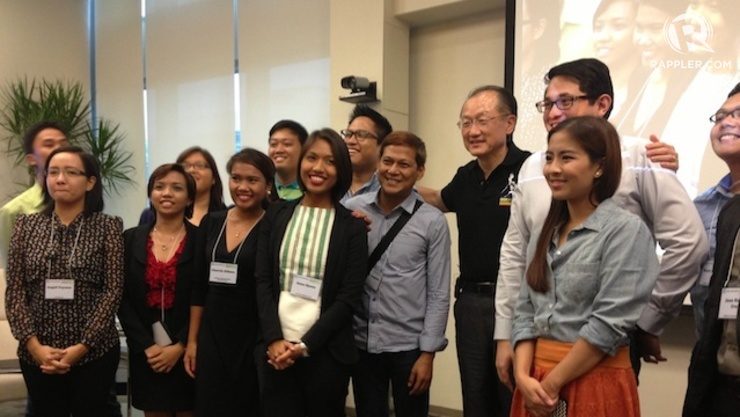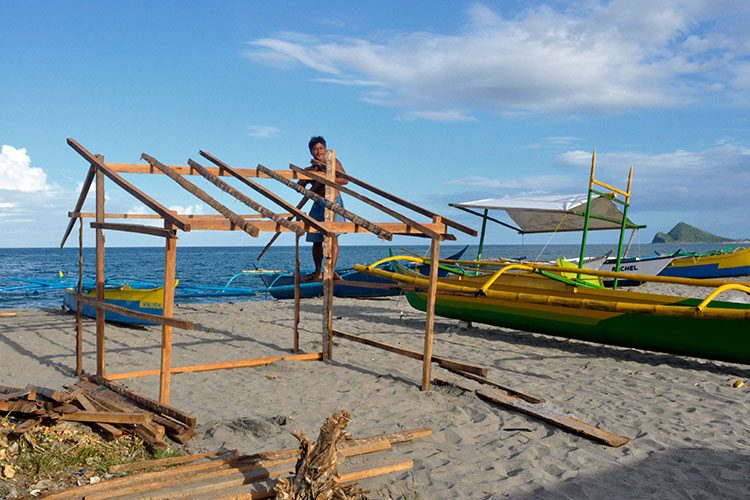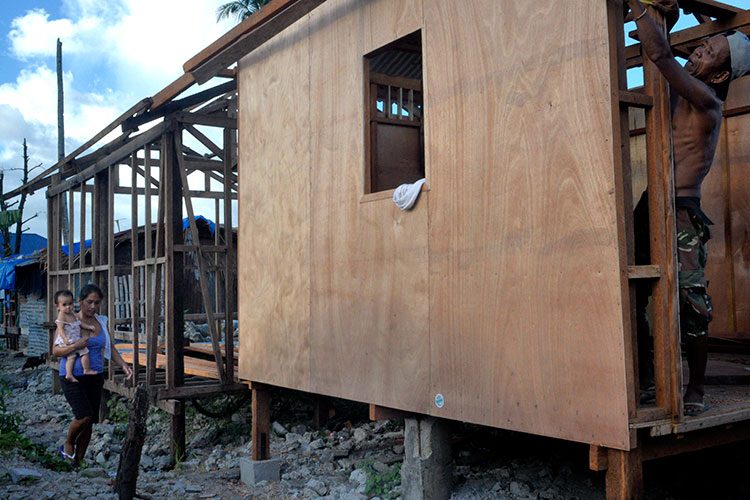SUMMARY
This is AI generated summarization, which may have errors. For context, always refer to the full article.

MANILA, Philippines – “You could see that the pain from the experience is still very raw.”
This thought stuck in the mind of World Bank President Jim Yong Kim after seeing towns in Leyte province that Super Typhoon Yolanda (Haiyan) flattened almost 9 months ago.
The head of the Washington-based development lender was speaking to a group of young leaders and advocates at a forum held in Taguig City on Tuesday, July 15, dubbed #speakup4climate.
He talked about a painful truth that the world has yet to address after countless of studies have sounded alarm bells about impending disasters – including a recent one by the World Bank.
Nowhere near enough
The World Bank study released in June 2013, about 5 months before Super Typhoon Yolanda pummeled the central islands of the Philippines, warned of more intense typhoons, higher sea levels, and storm surges due to climate change.
The report also identified the country as the 3rd most vulnerable country in the world to extreme weather-related events, earthquakes, sea-level rise, and storm surges.
What is lacking is neither compassion nor commitment to help. The problem, Kim suggested, is that the world is not putting its resources where its mouth is.
“Unfortunately in developing countries, investments that we’ve made in resilience is nowhere near enough,” Kim said, reiterating a worrying trend in disaster financing pointed out by the World Bank study – the country is spending more on recovery than on preparedness.

Commitment to invest
Kim was recently in the Philippines for a two-day visit to discuss with the government a new partnership strategy anchored in “making growth work for the poor.”
After his visit to Tacloban City and the coastal towns of Palo and Tanauan, Kim announced the World Bank will provide more than $62 million for roads, bridges, and jobs in areas gravely hit by Yolanda.
“The commitments that we’ve made to really invest so that next time the poorest will not bear the brunt of disaster again is one of the things that is important,” Kim stressed.
The fund earmarked for Yolanda recovery is part of a $508.25-million project seeking to raise rural incomes and productivity for farmers and fisherfolk across the country. About $1 billion in financial assistance has already been provided by the World in the aftermath of Yolanda.
The World Bank has also poured more than half a billion dollars into the Aquino government’s social protection programs.

Beyond funding
Kim said he was encouraged to see the government, civil society, private sector, and local communities helping each other in rebuilding access roads, irrigation facilities, shelters, and schools in Leyte.
Tanauan Mayor Pel Tecson, who accompanied Kim to a permanent relocation site in one of the coastal town’s villages, welcomed the World Bank’s support for rebuilding efforts.
Hailed as a “bright exception” in a province that continues to face shelter problems months after the disaster, Tanauan boasts of a prompt and clear roadmap to recovery and development that focuses on shelter, livelihood, and infrastructure, Tecson told Rappler.
Beyond financial assistance, spreading exemplary development efforts particularly in countries vulnerable to climate change and disasters is one of the major thrusts of the World Bank, Kim said.
On the cutting edge
“One of the things that we have to do now is to commit ourselves to capture all the lessons from all over the world in terms of how to build buildings, how to prepare countries especially poor communities for resilience,” Kim said.
According to Kim, the Philippines is “on the cutting edge” in terms of both climate change adaptation and mitigation, noting that the country is influencing the discussion on climate change.
Kim added, “We hope more countries will wake up with solutions to problems (like disasters).” – Rappler.com
For more stories about disaster recovery, visit the Project Agos microsite, a platform that combines top down government action and bottom up civic engagement to help communities deal with climate change adaptation and disaster risk reduction.
Add a comment
How does this make you feel?
There are no comments yet. Add your comment to start the conversation.